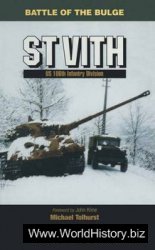Archaeologists and paleoanthropologists face a dilemma. The only way to thoroughly investigate our past is to excavate sites where biological and cultural remains are found. Unfortunately, excavation results in the site’s destruction. Thus researchers strive to excavate in such a way that the location and context of everything recovered, no matter how small, are precisely recorded. These records help scientists make sense of the data and enhance our knowledge of the past. Knowledge that can be derived from physical and cultural remains diminishes dramatically if accurate and detailed records of the excavation are not kept. As anthropologist Brian Fagan has put it,
The fundamental premise of excavation is that all digging is destructive, even that done by experts.
The archaeologist’s primary responsibility, therefore, is to record a site for posterity as it is dug because there are no second chances.66
Archaeologists work with artifacts, any object fashioned or altered by humans—a flint scraper, a basket, an axe, or such things as house ruins or walls. An artifact expresses a facet of human culture. Because it is something that someone made, archaeologists like to say that an artifact is a product or representation of human behavior and beliefs, or, in more technical terms, artifacts are material culture.
Artifacts are not considered in isolation; rather, they are integrated with biological and ecological remains. Such ecofacts, the natural remains of plants and animals found in the archaeological record, convey much about associated artifacts. Archaeologists also focus on features—non-por-table elements such as hearths and architectural elements such as walls—that are preserved in the archaeological record. Just as important as the artifacts and physical remains is the way they were left in the ground. For example, what people do with the things they have made, how they dispose of them, and how they lose them reflect important aspects of human culture. In other words, context allows archaeologists to understand the cultures of the past.
Similarly, context provides important information about biological remains. It provides information about which fossils are earlier or later in time than other fossils. Also, by noting the association of ancient human fossils with the remains of other species, the paleoanthropologist may make significant progress in reconstructing environmental settings of the past.
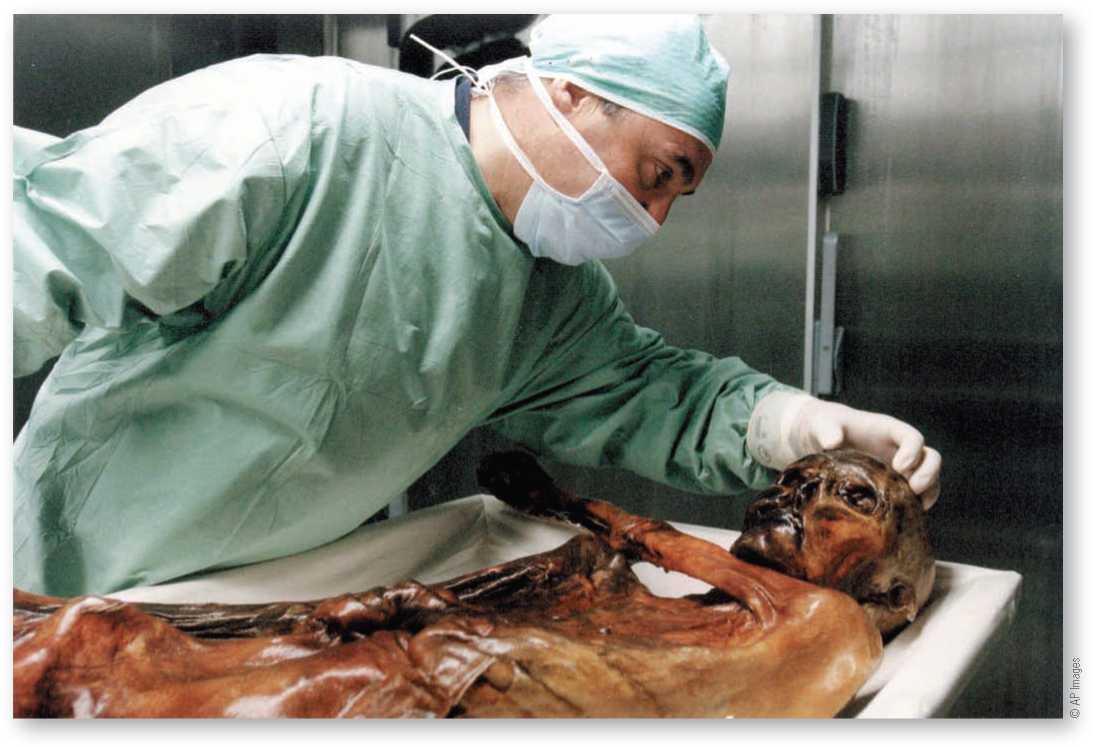
In rare circumstances, human bodies are so well preserved that they could be mistaken for recent corpses. Such is the case of “Otzi,” the 5,200-year-old “Ice Man,” exposed by the melting of an alpine glacier in the Tyrolean Alps in 1991. Both the Italian and the Austrian governments felt they had legitimate claims on this rare find, and they mounted legal, geographic, and taphonomic arguments for housing the body. These arguments continued as the specimen, just released from the ice, began to thaw.
Cultural and physical remains represent distinct kinds of data, but the fullest interpretation of the human past requires the integration of ancient human biology and culture. Often paleoanthropologists and archaeologists work together to systematically excavate and analyze fragmentary remains, placing scraps of bone, shattered pottery, and scattered campsites into broad interpretive contexts.
Broadly defined, a fossil is any mineralized trace or impression of an organism that has been preserved in the earth’s crust from past geologic time. Fossilization typically involves the hard parts of an organism. Bones, teeth, shells, horns, and the woody tissues of plants are the most successfully fossilized materials. Although the soft parts of an organism are rarely fossilized, casts or impressions of footprints, brains, and even whole bodies are sometimes found. Because dead animals quickly attract meat-eating scavengers and bacteria that cause decomposition, they rarely survive long enough to become fossilized. For an organism to become a fossil, it must be covered by some protective substance soon after death.
An organism or part of an organism may be preserved in a number of ways. The whole animal may be frozen in ice, like the famous mammoths found in Siberia, safe from the forces of predators, weathering, and bacteria. Or it may be enclosed in a natural resin exuding from evergreen trees, later becoming hardened and fossilized as amber. Specimens of spiders and insects dating back millions of years have been preserved in the Baltic Sea area in northeastern Europe, which is rich in resin-producing evergreens such as pine, spruce, or fir trees.
Fossil Any mineralized trace or impression of an organism that has been preserved in the earth’s crust from past geologic time.
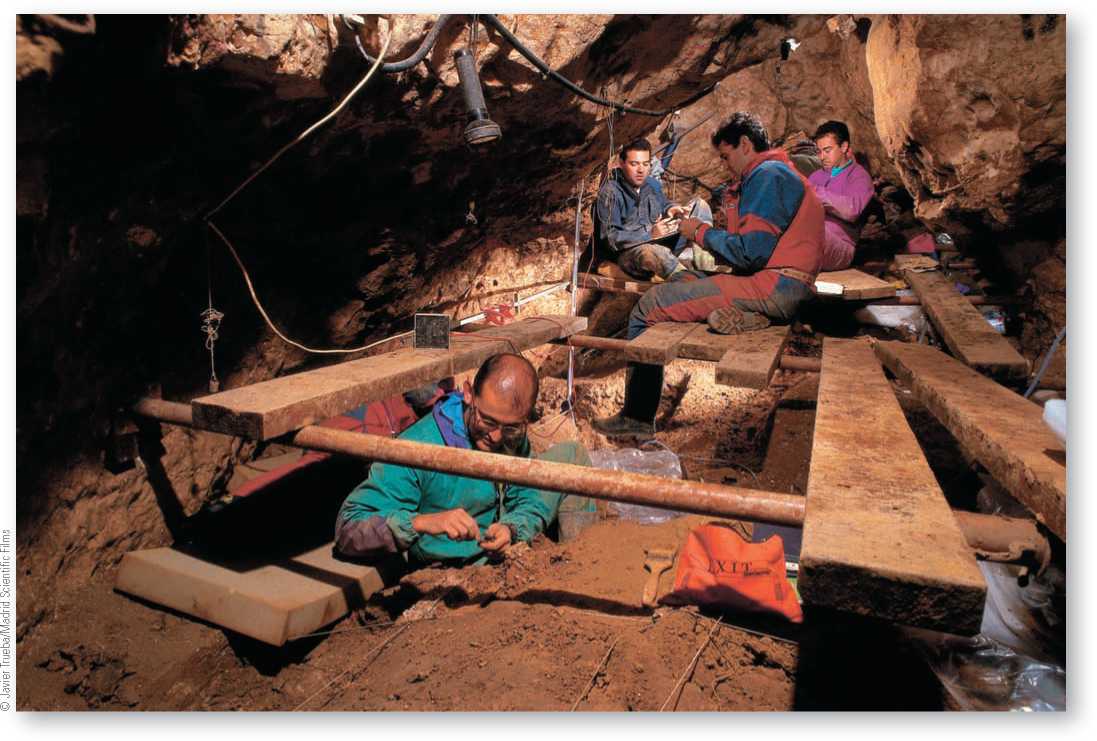
To excavate the ancient Stone Age site Sima de los Huesos or “Pit of Bones,” Spanish paleoanthropologist Juan Luis Arsuaga and his team spend nearly an hour each day traveling underground through a narrow passage to a small enclosed space, rich with human remains. Here, fossils are excavated with great care and transported back to the laboratory, where the long process of interpretation and analysis begins.
An organism may be preserved in the bottoms of lakes and sea basins, where the body or body part may be quickly covered with sediment. An entire organism may also be mummified or preserved in tar pits, peat, oil, or asphalt bogs, in which the chemical environment prevents the growth of decay-producing bacteria.
It is especially rare to find an entire organism fossilized, let alone a human one. Fossils generally consist of scattered teeth and fragments of bones found embedded in rock deposits. Most have been altered in some way in the process of becoming fossilized. Taphonomy (from the Greek for “tomb”), the study of the biologic and geologic processes by which dead organisms become fossils, provides systematic understanding of the fossilization process vital for the scientific interpretations of the fossils themselves.
Taphonomy The study of how bones and other materials come to be preserved in the earth as fossils.
Fossilization is most apt to occur among marine animals and other creatures living near water. Concentrations of shells and other parts of organisms are covered and completely enclosed by the soft waterborne sediments that eventually harden into shale and limestone in the following fashion: As the remains of organisms accumulate on shallow sea, river, or lake bottoms, they become covered by sediment and silt, or sand. These materials gradually harden, forming a protective shell around the skeleton of the organism. The internal cavities of bones or teeth and other parts of the skeleton fill in with mineral deposits from the sediment immediately surrounding the specimen. Then the external walls of the bone decay and are replaced by calcium carbonate or silica.
Unless protected in some way, the bones of a land dweller are generally scattered and exposed to the deteriorating influence of the elements, predators, and scavengers. Occasionally, terrestrial animals living near lakes or rivers become fossilized if they die next to or in the water. A land dweller may also become fossilized if it happens to die in a cave, or if some other meat-eating animal drags its remains to a site protected from erosion and decay. In caves, conditions are often excellent for fossilization, as minerals contained in water dripping from the ceiling may harden over bones left on the cave floor. In northern China, for example, many fossils of Homo erectus (discussed in Chapter 8) and other animals were found in a cave near a village called Zhoukoudian, in deposits of consolidated clay and rock that had fallen from the cave’s limestone ceiling. The cave had been frequented by both humans and predatory animals, which left remains of many a meal there.
It is quite rare to find entirely preserved fossil skeletons dating to before the cultural practice of burial began about 100,000 years ago. The human fossil record from before this time consists primarily of fragmentary remains. The fossil record for many other primates is even poorer, because organic materials decay rapidly in the tropical forests where they lived. The records are much more complete for primates (such as evolving humans) that lived on the grassy plains or in savannah environments, where conditions were far more favorable to the formation of fossils. This was particularly true in places where ash deposited from volcanic eruptions or waterborne sediment along lakes and streams could quickly cover organisms that died there. At several localities in Ethiopia, Kenya, and Tanzania in East Africa, numerous fossils important for our understanding of human evolution have been found near ancient lakes and streams, often sandwiched between layers of volcanic ash.
In more recent times, such complete remains, although not common, are often quite spectacular and may be particularly informative. As an example, consider the recovery in 1994 of an Eskimo girl’s remains in Barrow, Alaska, described in the Original Study. As seen in this case study, successful exploration of the past depends upon cooperation and respect between anthropologists and the living people with ancestral connections to the physical and cultural remains being studied.

Original Study
Whispers from the Ice by Sherry Simpson
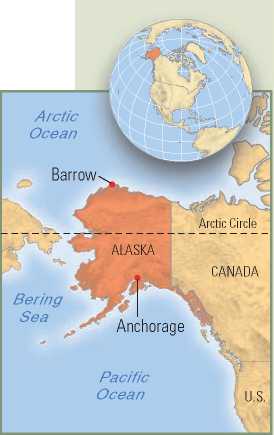
People grew excited when a summer rainstorm softened the bluff known as Ukkuqsi, sloughing off huge chunks of earth containing remains of historic and prehistoric houses, part of the old village that predates the modern community of Barrow. Left protruding from the slope was a human head. Archaeologist Anne Jensen happened to be in Barrow
Buying strapping tape when the body appeared. Her firm, SJS Archaeological Services, Inc., was closing a field season at nearby Point Franklin, and Jensen offered the team's help in a kind of archaeological triage to remove the body before it eroded completely from the earth.
The North Slope Borough hired her and Glenn Sheehan, both associated with Pennsylvania's Bryn Mawr College, to conduct the work. The National Science Foundation, which supported the 3-year Point Franklin Project, agreed to fund the autopsy and subsequent analysis of the body and artifacts. The Ukkuqsi excavation quickly became a community event. In remarkably sunny and calm weather, volunteers troweled and picked through the thawing soil, finding trade beads, animal bones, and other items. Teenage boys worked alongside grandmothers. The smell of sea mammal oil, sweet at first then corrupt, mingled with ancient organic odors of decomposed vegetation. One man searched the beach for artifacts that had eroded from the bluff, discovering such treasures as two feather parkas. Elder Silas Negovanna, originally of
Wainwright, visited several times, "more or less out of curiosity to see what they have in mind,” he said. George Leavitt, who lives in a house on the bluff, stopped by one day while carrying home groceries and suggested a way to spray water to thaw the soil without washing away valuable artifacts. Tour groups added the excavation to their rounds.
"This community has a great interest in archaeology up here just because it's so recent to their experience,” says oral historian Karen Brewster, a tall young woman who interviews elders as part of her work with the North Slope Borough's division of Inupiat History, Language, and Culture. "The site's right in town, and everybody was really fascinated by it.”
Slowly, as the workers scraped and shoveled, the earth surrendered its historical hoard: carved wooden bowls, ladles, and such clothing as a mitten made from polar bear hide, bird-skin parkas, and mukluks. The items spanned prehistoric times, dated in Barrow to before explorers first arrived in 1826.
The work prompted visiting elders to recall when they or their parents lived in traditional sod houses and relied wholly on the land and sea for sustenance.
CONTINUED
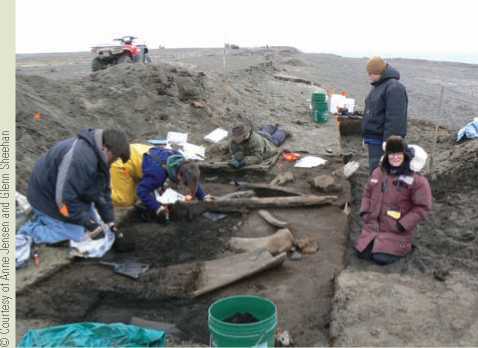
In the long cool days of the Alaska summer, archaeologist Anne Jensen and her team excavate artifacts that will be exhibited at the Inupiat Heritage Center in Barrow, Alaska. In addition to traditional museum displays honoring the past, the center actively promotes the continuation of Inupiat Eskimo cultural traditions through innovations such as the elder-in-residence program.
CONTINUED
Some remembered sliding down the hill as children, before the sea gnawed away the slope. Others described the site's use as a lookout for whales or ships. For the archaeologists, having elders stand beside them and identify items and historical context is like hearing the past whispering in their ears. Elders often know from experience, or from stories, the answers to the scientists' questions about how items were used or made. "In this instance, usually the only puzzled people are the archaeologists,” jokes archaeologist Sheehan.
A modern town of 4,000, Barrow exists in a cultural continuum, where history is not detached or remote but still pulses through contemporary life. People live, hunt, and fish where their ancestors did, but they can also buy fresh vegetables at the store and jet to other places.
Elementary school classes include computer and Inupiaq language studies. Caribou skins, still ruddy with blood, and black brant carcasses hang near late-model cars outside homes equipped with television antennas. A man uses power tools to work on his whaling boat. And those who appear from the earth are not just bodies, but relatives.
"We're not a people frozen in time,” says Jana Harcharek, an Inupiat Eskimo who teaches Inupiaq and nurtures her culture among young people. "There will always be that connection between us [and our ancestors]. They're not a separate entity.”
The past drew still closer as the archaeologists neared the body. After several days of digging through thawed soil, they used water supplied by the local fire station's tanker truck to melt through permafrost until they reached the remains, about 3 feet below the surface. A shell of clear ice encased the body, which rested in what appeared to be a former meat cellar. With the low-pressure play of water from the tanker, the archaeologists teased the icy casket from the frozen earth, exposing a tiny foot. Only then did they realize they had uncovered a child. "That was kind of sad, because she was about my daughter's size,” says archaeologist Jensen.
The girl was curled up beneath a baleen toboggan and part of a covering that Inupiat elder Bertha Leavitt identified as a kayak skin by its stitching.
The child, who appeared to be 5 or 6, remained remarkably intact after her dark passage through time. Her face was cloaked by a covering that puzzled some onlookers. It didn't look like human hair, or even fur, but something with a feathery residue. Finally they concluded it was a hood from a feather parka made of bird skins. The rest of her body was delineated muscle that had freeze-dried into a dark brick-red color. Her hands rested on her knees, which were drawn up to her chin. Frost particles coated the bends of her arms and legs.
"We decided we needed to go talk to the elders and see what they
Wanted, to get some kind of feeling as to whether they wanted to bury her right away, or whether they were willing to allow some studies in a respectful manner—studies that would be of some use to residents of the North Slope,” Jensen says. Working with community elders is not a radical idea to Jensen or Sheehan, whose previous work in the Arctic has earned them high regard from local officials who appreciate their sensitivity. The researchers feel obligated not only to follow community wishes, but to invite villagers to sites and to share all information through public presentations.
In fact, Jensen is reluctant to discuss findings with the press before the townspeople themselves hear it.
"It seems like it's a matter of simple common courtesy,” she says. Such consideration can only help researchers, she points out. "If people don't get along with you, they're not going to talk to you, and they're liable to throw you out on your ear.” In the past, scientists were not terribly sensitive about such matters, generally regarding human remains—and sometimes living natives—as artifacts themselves. Once, the girl's body would have been hauled off to the catacombs of some university or museum, and relics would have disappeared into exhibit drawers in what Sheehan describes as "hit-and-run archaeology.”
"Grave robbers” is how Inupiat Jana Harcharek refers to early Arctic researchers. "They took human remains and their burial goods. It's pretty gruesome. But, of course, at the time they thought they were doing science a big favor. Thank goodness attitudes have changed.”
Today, not only scientists but municipal officials confer with the Barrow Elders Council when local people find skeletons from traditional platform burials out on the tundra, or when bodies appear in the house mounds.
The elders appreciate such consultations, says Samuel Simmonds, a tall, dignified man known for his carving.
A retired Presbyterian minister, he presided at burial ceremonies of the famous "frozen family,” ancient Inupiats discovered in Barrow [about twenty years ago]. "They were part of us, we know that,” he says simply, as if the connection between old bones and bodies and living relatives is self-evident. In the case of the newly discovered body, he says, "We were concerned that it was reburied in a respectful manner. They were nice enough to come over and ask us.”
The elders also wanted to restrict media attention and prevent photographs of the body except for a few showing her position at the site.
They approved a limited autopsy to help answer questions about the body's sex, age, and state of health. She was placed in an orange plastic body bag in a stainless steel morgue with the temperature turned down to below freezing.
With the help of staff at the Indian Health Service Hospital, Jensen sent the girl's still-frozen body to Anchorage's
Providence Hospital. There she assisted with an autopsy performed by Dr. Michael Zimmerman of New York City's Mount Sinai Hospital. Zimmerman, an expert on prehistoric frozen bodies, had autopsied Barrow's frozen family in 1982, and was on his way to work on the prehistoric man recently discovered in the Alps.
The findings suggest the girl's life was very hard. She ultimately died of starvation, but also had emphysema caused by a rare congenital disease—the lack of an enzyme that protects the lungs. She probably was sickly and needed extra care all her brief life. The autopsy also found soot in her lungs from the family's sea mammal oil lamps, and she had osteoporosis, which was caused by a diet exclusively of meat from marine mammals. The girl's stomach was empty, but her intestinal tract contained dirt and animal fur. That remains a mystery and raises questions about the condition of the rest of the family. "It's not likely that she would be hungry and everyone else well fed,” Jensen says.
That the girl appears to have been placed deliberately in the cellar provokes further questions about precontact burial practices, which the researchers hope Barrow elders can help answer. Historic accounts indicate the dead often were wrapped in skins and laid out on the tundra on wooden platforms, rather than buried in the frozen earth. But perhaps the entire family was starving and too weak to remove the dead girl from the house, Jensen speculates. "We probably won't ever be able to say, ‘This is the way it was,'” she adds. "For that you need a time machine.”
The scientific team reported to the elders that radiocarbon dating places the girl's death in about ad 1200. If correct— for dating is technically tricky in the Arctic—the date would set the girl's life about 100 years before her people formed settled whaling villages, Sheehan says.
Following the autopsy and the body's return to Barrow. . . , one last request by the elders was honored. The little girl, wrapped in her feather parka, was placed in a casket and buried in a small Christian ceremony next to the grave of the other prehistoric bodies. Hundreds of years after her death, an Inupiat daughter was welcomed back into the midst of her community.
The "rescue” of the little girl's body from the raw forces of time and nature means researchers and the Inupiat people will continue to learn still more about the region's culture. Sheehan and Jensen returned to Barrow in winter 1994 to explain their findings to townspeople. "We expect to learn just as much from them,” Sheehan said before the trip. A North Slope Cultural Center. . . will store and display artifacts from the dig sites.
Laboratory tests and analyses also will contribute information. The archaeologists hope measurements of heavy metals in the girl's body will allow comparisons with modern-day pollution contaminating the sea mammals that Inupiats eat today. The soot damage in her lungs might offer health implications for Third World people who rely on oil lamps, dung fires, and charcoal for heat and light. Genetic tests could illuminate early population movements of Inupiats. The project also serves as a model for good relations between archaeologists and Native people. "The larger overall message from this work is that scientists and communities don't have to be at odds,” Sheehan says. "In fact, there are mutual interests that we all have. Scientists have obligations to communities. And when more scientists realize that, and when more communities hold scientists to those standards, then everybody will be happier.”
Adapted from Simpson, S. (1995, April). Whispers from the ice. Alaska, 23-28.




 World History
World History